Advertisements
Advertisements
प्रश्न
Which of the following lenses would you prefer to use while reading small letters found in a dictionary?
पर्याय
A convex lens of focal length 50 cm.
A concave lens of focal length 50 cm.
A convex lens of focal length 5 cm.
A concave lens of focal length 5 cm.
उत्तर
A convex lens of focal length 5 cm.
Explanation:
A convex lens gives a magnified image of an object when it is placed between the radius of curvature and focal length. Also, magnification is more for convex lenses having shorter focal lengths. Therefore, for reading small letters, a convex lens of focal length 5 cm should be used.
संबंधित प्रश्न
If you focus the image of a distant object, whose shape is given below, on a screen using a convex lens, the shape of the image of this object on the screen would be:
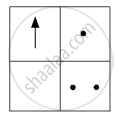
(a)
(b)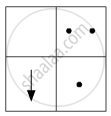
(c)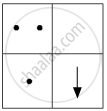
(d)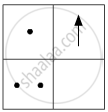
Where should an object be placed so that a real and inverted image of the same size as the object is obtained using a convex lens?
Explain with the help of a diagram, why the convex lens is also called a converging lens.
You eye contains a convex lens. Why is it unwise to look at the sun?
How could you find the focal length of a convex lens rapidly but approximately?
In order to obtain a real image twice the size of the object with a convex lens of focal length 15 cm, the object distance should be:
(a) more than 5 cm but less than 10 cm
(b) more than 10 cm but less than 15 cm
(c) more than 15 cm but less than 30 cm
(d) more than 30 cm but less than 60 cm
The diagram alongside shows the refraction of a ray of light from sir to a liquid.
(a) write the values of (i) angle of incidence, (ii) angle of refraction.
(b) use snell’s law to find the refractive index of liquid with respect to air.
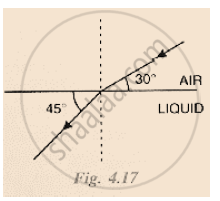
The diagrams (a) and (b) in Figure below show the refraction of a monochromatic ray of light through a parallel sided glass block and a prism respectively. In each diagram, label the incident, refracted emergent rays and the angle of deviation.

Define the term principal axis of a lens.
The focal length of a thin convex lens is ______ than that of a thick convex lens.
A convex lens forms an image of an object equal to the size of the object. Draw a diagram to illustrate it.
A convex lens forms an image of an object equal to the size of the object. State two more characteristics of the image.

i. Which type of microscope has the arrangement of lenses shown in the adjoining figure?
ii. Label the figure correctly.
iii. Write the working of this microscope.
iv. Where does this microscope used?
v. Suggest a way to increase the efficiency of this microscope.
Where should an object be placed in front of a convex lens to get a real image of the size of the object?
(a) What type of a lens can be used as a magnifying glass?
(b) Show by a ray diagram the formation of a real image by simple magnifying lens.
A lens always forms an image between the object and the lens.
A lens always forms an image between the object and the lens.
Point out the difference between a convex lens and a concave lens.
Which lens can produce a real and inverted image of an object?
In sunglasses, both of its surfaces are curved, yet their behaviour is neither like a convex lens nor like a concave lens. State the reason.
Distinguish between:
Concave lens and Convex Lens
